Musings on the New York Philharmonic’s Vietnam Concerts
Prior to the New York Philharmonic’s historic trip to Pyongyang nearly two years ago, it had been some 35 years between the two very large cultural events in which I had the good fortune to be a participant and which many regarded as of great international importance – the Philadelphia Orchestra’s tour of Mainland China in 1973 under the Nixon administration and the New York Philharmonic’s trip to North Korea in 2008. The similarities between the two situations were quite striking to me, and to be among the first Westerners to see these two countries in decades, as well as to be able to share the cultural accomplishments of the great composers of the Western Hemisphere with two peoples for most of whom such works of art were totally unfamiliar, were among the highlights of my musical career and were experiences never to be forgotten.
Thus to find myself as part of a cultural outreach to yet another country that for the most part had remained secretive and apart from the Western world, this to be a trip to Hanoi in Vietnam, once again with the New York Philharmonic, was to my mind going to be yet another unique highlight of my orchestral experiences. I feel it totally inadequate to resort to the trite and trivial cliché that music is the international language but, no matter how often that phrase has been used in less than earth-shattering situations, there can be no denying the truth of it.
From the time the trip was announced, I began to wonder what similarities I would find among these three countries. I had discovered many parallels between the China of the 1970s under Mao Tse Tung and the North Korea of the 21st century under Kim Jong-il (see Musings on the New York Philharmonic’s North Korea Concert), but the China of today bears little resemblance to that of the same country 35 years ago. I found myself wondering if Vietnam would more closely resemble North Korea, what with the government presence everywhere as well as an ongoing “revolution” against the Western world as expressed in anti-American posters and signs throughout the country despite poverty and deprivations, or would we see something more approaching an imitation of China’s growing financial clout as that country treads the thin path between capitalism and its own form of communism?
One thing that puzzled me from the outset of our trip was the lack of attention paid by the media to this particular event. The news coverage of our trip to North Korea in 2008 had been very intense, with news organizations from across the globe joining us for our landing in Pyongyang. Now we were visiting another secretive communist country with whom we had had less than cordial relations for decades, and yet our trip barely registered a “blip” anywhere. We landed at the Hanoi airport at night with no media coverage and extraordinarily little fanfare when compared to the Philadelphia Orchestra’s China trip and the New York Philharmonic’s North Korean visit, and yet it seemed to me that the events could be seen as almost of equal importance.
Upon reflection, however, there were differences. First of all, the world financial crisis has rightfully been front and center of news coverage for months, and thus an orchestra concert could hardly be seen as newsworthy given the struggles of so many people to deal with the hardships that have been plaguing virtually the entire world. Secondly, the United States had had extraordinarily few diplomatic relations with either China or North Korea prior to the visits by those orchestras of which I was a member. In the case of Vietnam, however, we have at least had some sort of relationship at work for a few years, and we do have a United States Embassy in place in Hanoi. Furthermore Vietnam had already been quietly trying to improve its international image and had actually in recent years been attempting to attract tourists and other visitors. Thus our visit was less of a sudden “bolt from the blue” as it was something of a logical progression in Vietnam’s steps to include itself in the world community. Still, I realized that it was going to be yet another extraordinary trip, and I certainly did not want to miss it.
Our trip to Vietnam was preceded by some concerts in Seoul, South Korea, certainly one of the more thriving cosmopolitan cities of the world in a country that had achieved a great deal of financial influence as well as industrial prowess, as represented by such heavyweight companies as Hyundai and LG. Seoul is a thoroughly modern and affluent city with a booming economy and modern construction. As we were taking off from Seoul Incheon Airport on our trip to Hanoi, I was again wondering what we would find. In our visit to North Korea, we saw a people struggling to eke out a living, a place where even electricity is doled out in small amounts, heavy machinery for construction is at a minimum, and the government presence is felt everywhere with pictures of Kim Jong-il or his father gazing down on the people. In short, no two countries could be more different than the two Koreas. In 2008, our trip to Pyongyang had been preceded by a visit to two thriving cities of China– Beijing and Shanghai – with their tall modern buildings that rivaled those of other Asian cities. Visiting these two cities made it obvious that China was now adopting some capitalist principles that allowed for an increasing middle class of people with money to spend on consumer goods. The question in my mind was upon which side of the political and financial spectrum would we find Vietnam falling.
We arrived at Noi Bai International Airport outside Hanoi at about 10:00 PM on the evening of October 14, 2009. At least electricity did not seem to be a problem, as had been almost immediately apparent in North Korea, but I began to wonder about the government influence virtually upon the instant of our arrival. We all naturally have gotten used to the idea these days of security x-ray screening of our luggage and persons prior to boarding a plane, but this was the first time I had ever seen passengers and personal luggage scanned in an airport upon getting off a plane! I couldn’t imagine what they expected to find under such circumstances. Nonetheless, the screening was done in short order, and we headed out to our busses that would take us into the city and our hotel.
I must confess that my initial impressions were not particularly favorable. The busses, for example, were what might be termed utilitarian and were as unremarkable as ordinary city buses that receive only the minimum maintenance required to keep them functioning. Without knowing it at the time, I was seeing what I afterward came to think of as a characteristic of the Vietnamese people – their unpretentiousness. I would later realize that in a sprawling city of almost 6.5 million people such as Hanoi, in what we would refer to as a developing country that now wants to take its place among the nations, the first order of business is simply to keep things running.
However, as this was my first glimpse of the country, I was a little disheartened at the sights during the hour-long trip into the city. At that time of night, the highway was fairly well lit, but the buildings along the route were completely dark with only an occasional room every few hundred feet being illuminated by a single light bulb, this usually on the ground floor. These few places often appeared to be some sort of gathering spots for the local people, sort of “bare bones” cafes with nothing but a concrete floor with a few inexpensive tables and chairs and unpainted walls for decor. There were no neon signs or external lights of any kind. For a bit of decoration, a couple of places had a string of what we would call Christmas tree lights hung on the outside. Most were completely open without a front wall for the entrance and no glass. In the gloom of the misty weather and the night sky, the predominant color seemed to be gray, mostly from what appeared to be masonry dust. The buildings were small and narrow, often at strange angles to one another, with a mixed diversity of building material, and not particularly well constructed with walls and floors not very plumb.
Very few people were in sight at this time of night, and what people were about were in or around these few impromptu “cafes,” for lack of a better term. One or two of these places had signs on them that said, “Karaoke,” but I saw no indication of anything musical taking place. The vast majority of the buildings were completely devoid of any lighting at that time of night, inside or out. Nonetheless I did realize that I was not seeing the extreme poverty that was so apparent in the peasantry of the North Koreans.
Coming into the center of the city, the buildings became more and more closely compacted together. Basic street lighting itself did not seem to be a problem, but the bright elaborate neon signs of a Seoul or Tokyo were not in evidence. We arrived at the Hilton Hanoi Opera next to the Hanoi Opera House where we would be performing, and here after a relatively understated exterior when compared to other large hotels of the world, I found the inside of the hotel to be quite luxurious and lovely. My room was large and comfortable by any standards, and the people were very courteous and friendly.
The next day, after a very nice breakfast provided by the hotel, I grabbed my camera and headed out of the hotel to walk around a bit “following my nose” in order to get a feel for the area. The first thing that caught my eye were the power and telephone lines. I must say that this power grid defies description. Literally hundreds of wires are loosely strung from pole to pole running along the streets. It would be impossible to figure out what line does what or goes where, and the men who are responsible for keeping this system of wiring up and running must have the most recession-proof job in the country. Often one sees a couple of wires simply hanging down with the ends within easy reach. How can electrocution not be a major problem in this system? I shuddered to think what would happen if a major typhoon hit the city. This jungle of wires often forms conjunctions at street intersections, and the snarls of wiring that are thus formed near the tops of the poles at these intersections could not be worse if you allowed an army of toddlers to run amok in a yarn store. How this system functions must remain one of the great mysteries of Hanoi, but it obviously does work, although I have to wonder if anyone knows how or why it does.
The Vietnamese people are clearly industrious and hard working, obviously necessary attributes in order for them to eke out a living. The ordinary laborer or shop keeper seems to be of two sorts – those with overhead and those with no overhead at all. Stores that physically exist are quite different from what we think of as a store in the United States. For the most part, the stores are small and narrow, and front walls and windows are non-existent. Sometimes there are no signs to tell you what the business is. One gathers that information from simply looking inside or seeing the area in which you find the store. For the most part, stores selling the same sort of merchandise are all on the same street. Silk stores will be on one street, religious articles on another, leather goods on yet a third, shoes on still another street, etc. I haven’t yet figured out how such a system came to be and how all these stores that basically have all the same merchandise all stay in business when all confine themselves to one area. I would imagine that it would be similar to the idea of a street in the United States being entirely devoted to nothing but fast-food hamburger shops with none found anywhere else. Why then pick one such shop over the other?
The other type of “store,” often a kind of restaurant, is more portable, shall we say. A sizable percentage of the working people are peddlers of some sort, often wearing the pointed reed hats associated with Southeast Asian countries and carrying a long pole on their shoulders with baskets hanging from the ends filled with different merchandise, mostly foodstuffs. Often these peddlers will set up shop on a portion of sidewalk. A few small blue plastic stools are set about, a small portable grill is sometimes included in the set-up, perhaps one side of a small plastic sheet is attached to a wall with the other side hung on poles to provide cover from the sun, and in the end one has an instant restaurant. Tradesmen often do somewhat the same thing. I saw locksmiths, cobblers, small motor repairmen and other such trades simply plying their trades on a small portion of sidewalk, certainly one way of dealing with the problem of overhead.
I should also mention another type of peddler that plies his or her trade almost exclusively around hotels or other tourist sites – the hawkers of souvenirs such as t-shirts, military hats and postcards. These sellers are often extremely aggressive in their approach and will follow a tourist upon his exit from the hotel for half a block or more, all the while keeping up a non-stop sales pitch in an attempt to get a purchase. If one has ever fed pigeons in a park, you know that you cannot feed only one, because attempting to do so draws every other pigeon within viewing range. So, too, with these vendors. Purchasing from one brings the entire flock upon you, all trying to sell you something from a remarkably similar set of wares. The only way to handle this situation is to continue walking and make no contact beyond constantly saying, “No, thank you.” Their aggressiveness, all completely harmless of course, can be a little disconcerting at first, but one has to keep in mind that it must not be easy for them to make a living.
It is impossible to talk about Hanoi, however, without mentioning one overwhelming feature – the traffic. Most of the vehicular traffic is motorcycles and scooters, although there are also buses and some private cars. Into this mix is thrown the taxis, both gasoline and peddled, and everyone seems to be in a great hurry. No one seems to be able to drive without relying on their horns, and many of those get quite exotic in their tone patterns. The cacophony of sound can become deafening. What is fascinating is that, even though the roads can be quite large – frequently four or five lanes wide with an amazing set of intersections and traffic circles – there are very few traffic lights. What traffic lights are in existence seem to be viewed more as “suggestions.”
Initially one wonders how a pedestrian gets across one of these streets, but one does get the knack very quickly of merely weaving one’s way across the speeding lanes of traffic. Horns are blaring constantly, the motorcyclists and other drivers are vaguely aware of the pedestrians, the pedestrians are vaguely aware of the vehicular traffic, and the whole thing becomes like a gigantic real-life video game, not for the faint of heart. Intersections take on the properties of the shuffling of a deck of cards as everyone merges at breakneck speeds. Somehow it works, and I did not witness a single accident, and I always managed to get across even the widest streets on foot. I saw one enterprising photographer photographing his model, a lovely Vietnamese girl, in the middle of two streets of one of the busiest intersections of the shopping district. The drivers merely avoided them. Motorcyclists seem to be particularly adept at this art, and motorcycles appear unquestionably to be the dominant form of transportation. I often saw entire families on one cycle with the father driving, the mother sitting behind him, and a very young child sitting on the driver’s lap. Other cyclists were transporting towering loads of merchandise strapped to the back of the cycle.
As I was thus walking around the city, my impressions of Hanoi started to take shape, and I began to realize that it is indeed a remarkable city with a flavor all its own. Many of the buildings have an unquestionably French influence, not surprising given that the area was a French colony in the late 19th century. As I mentioned, the Vietnamese appear to be unpretentious, and this applies to their approach to construction. There are very few tall buildings in the city, and the architecture of more recent projects is unobtrusive and somewhat unremarkable. Most of the buildings in the city are older, and while many have unique and beautiful architectural touches left over from Hanoi’s earlier history, the outside physical appearance or upkeep does not seem to be of much importance. I found myself thinking that a coat or two of paint on most of the buildings would go a long way. Nonetheless this does not seem to trouble the Vietnamese, since it is a bit of a struggle for them simply to make a living.
The people seem basically happy and friendly, and surprisingly I felt almost no sense of government presence. There were no soldiers around with machine guns, for example, and in fact there were almost no soldiers at all. The police were unarmed except for billy clubs, not unlike the English police force. There were also no pictures of government leaders staring down on the people as in other communist countries, and there were no anti-American signs such as in North Korea.
In short, the government presence, although unquestionably there, is kept rather low key and does not seem to affect the common people very much. While I am not a politician and can only give my personal thoughts while trying to avoid the lengthy problem of human rights abuses, Vietnam seems to be attempting to follow along the lines of modern-day China as opposed to North Korea in that they appear to be adapting their communist form of government to accommodate capitalist principles in many cases.
That night, the United States Ambassador, Michael Michalak, held a lovely reception at his home for the entire orchestra, and told us how much the Vietnamese people were looking forward to our concerts. Indeed this certainly turned out to be true. There had been a press conference held for the media, and Maestro Alan Gilbert was later interviewed for Vietnam Television. Our rehearsal the next day in preparation for the concerts was itself well attended by an audience that included students and musicians from the National Academy of Music and the National Symphony Orchestra. Several of our musicians, including many principal players, gave popular master classes for students at the Hanoi Music Conservatory, an institution founded in 1956. Maestro Gilbert himself worked with the Conservatory’s orchestra, leading them in such works as the Beethoven Symphony No. 7, which we ourselves would be performing later.
The Vietnamese’s appreciation of classical music became even more apparent during our performances. The Hanoi Opera House is small, seating only about 650 people, and thus one of our two concerts was taped for broadcast on Vietnamese television, and a state-of-the-art sound system and two large viewing screens were set up outside the hall so people could see and hear both concerts from the outside. The acoustics of the hall were a little on the dry side but were nonetheless very warm and well blended. As had been true in North Korea, it was indeed quite an occasion to see a communist country, with whom we have long had a troubled relationship, having one of our country’s premiere orchestras playing on a stage flanked by the flags of both countries. Both the Vietnam and the United States national anthems were played at the start of the first concert with the audience standing, and after each anthem there was applause. Pianist Emanuel Ax was then the featured soloist on the Beethoven Piano Concerto No. 4 and was so enthusiastically received that he played a lovely Chopin nocturne as an encore, much to the audience’s delight. Violinist Frank Peter Zimmermann was likewise cheered at the next evening’s concert for a stunning rendition of the Brahms Violin Concerto. The Beethoven Symphony No. 7 formed the second half of both concerts with the audience again wanting encores at the end.
During one number that I did not have to play, I stepped outside for a moment and went around to the front of the hall to see what the sound and visual system was like from the street during the performance. While traffic had not stopped entirely, there were hundreds of motorcycles lined up row upon row as the people seated on them watched the concert. It reminded me of an old-fashioned drive-in movie except with cycles in the audience instead of cars. It was very clear that the New York Philharmonic’s first-ever visit to Vietnam was an unqualified success. It certainly appeared that the Vietnamese seemed much more in touch with Western classical music than had been the North Koreans, where classical music had seemed completely unfamiliar to a sizable percentage of the audience. Even our hotel in Hanoi had a string quartet in its lobby during the early evening hours.
The next day, I felt I would be remiss if I did not pay a visit to Hoa Lo Prison, otherwise know as the infamous “Hanoi Hilton” that was used during the Vietnam War and which once held Senator John McCain as an inmate. I personally was not aware that this prison was built in 1896 by the French to hold Vietnamese political prisoners. What is left of the building is now a museum, and as one would expect, the Vietnamese mention little of the holdings of American prisoners and spend most of the exhibits on the atrocities committed by the French. It is indeed a gruesome sight, and one wonders how anyone could have survived.
Life-sized figures are shown in the barracks in representations of the conditions the French (and later the Vietnamese) would use on their prisoners. Men were kept shackled in solid iron bands to stone beds. Women with their children were kept in a separate area that was only marginally better. The worst area was known as the Cachot where the prisoners regarded as the worst were kept in solitary confinement and shackled with iron bands on their feet in small pitch-black rooms where they were often forced to stay for days in their own excrement. A working guillotine that the French used is also a part of the exhibits.
Near the end of the museum, a mention is finally made of the Vietnam War but only in terms of giving coverage to anti-war demonstrations, including those in the United States. In the Vietnamese government’s view, it would appear that the struggle for liberation from the French was merely extended into a continued struggle with the United States. Interestingly enough, there is a picture of John McCain in his visit back to the “Hanoi Hilton” in April of 2000, but the reason for his visit is not directly mentioned.
The rest of my sightseeing for the short time we were there was devoted to the more beautiful aspects of the city, and there are many to see. Probably the most picturesque area is the park in the center of the city surrounding Hoan Kiem Lake.
In the center of the lake are two small islands, one of which is devoted to the Tortoise Pagoda, a small tower on one of the islands that is rooted in Vietnamese legend to Kim Qui, the Golden Tortoise God.
The other island holds the Ngoc Son Temple reachable only by the Bridge of the Rising Sun, a famous and beautiful landmark. The whole lake area with its islands is a favorite backdrop for such things as wedding pictures and modeling shoots. Here one could wander around lovely paths lined with statues and escape the heat of the sun.
On the way out of the city heading back to the airport, we passed the same areas that I had seen in the evening of our arrival. With what I hoped was an accurate new understanding, I began to believe that what I had seen was the Vietnamese tendency toward utilitarian aspects of construction along with an unpretentious outlook. Recently-built buildings are often not particularly pretty, but they work. Brick walls, for example, often look a little amateurish but appear solid. Peddlers ply their wares, and unnamed shops are open for business, a great many motorcycle repair shops among them. Sometimes one passes an impressive house, often again with French touches of architecture, but even though one is in the outskirts of the city with much more room to expand, the houses, even if separated from others, are kept very narrow as if they were still a part of a set of row houses in the center of the city. It seemed to me that in the eyes of the Vietnamese, life is practical.
In my layman’s view, the biggest difference between our visits to North Korea and Vietnam seems to lie in the intent of its leaders. The North Korean leadership appeared to use our visit as something of a propaganda opportunity in which not only did we perform for them but they had the people “perform” for us in attempts “

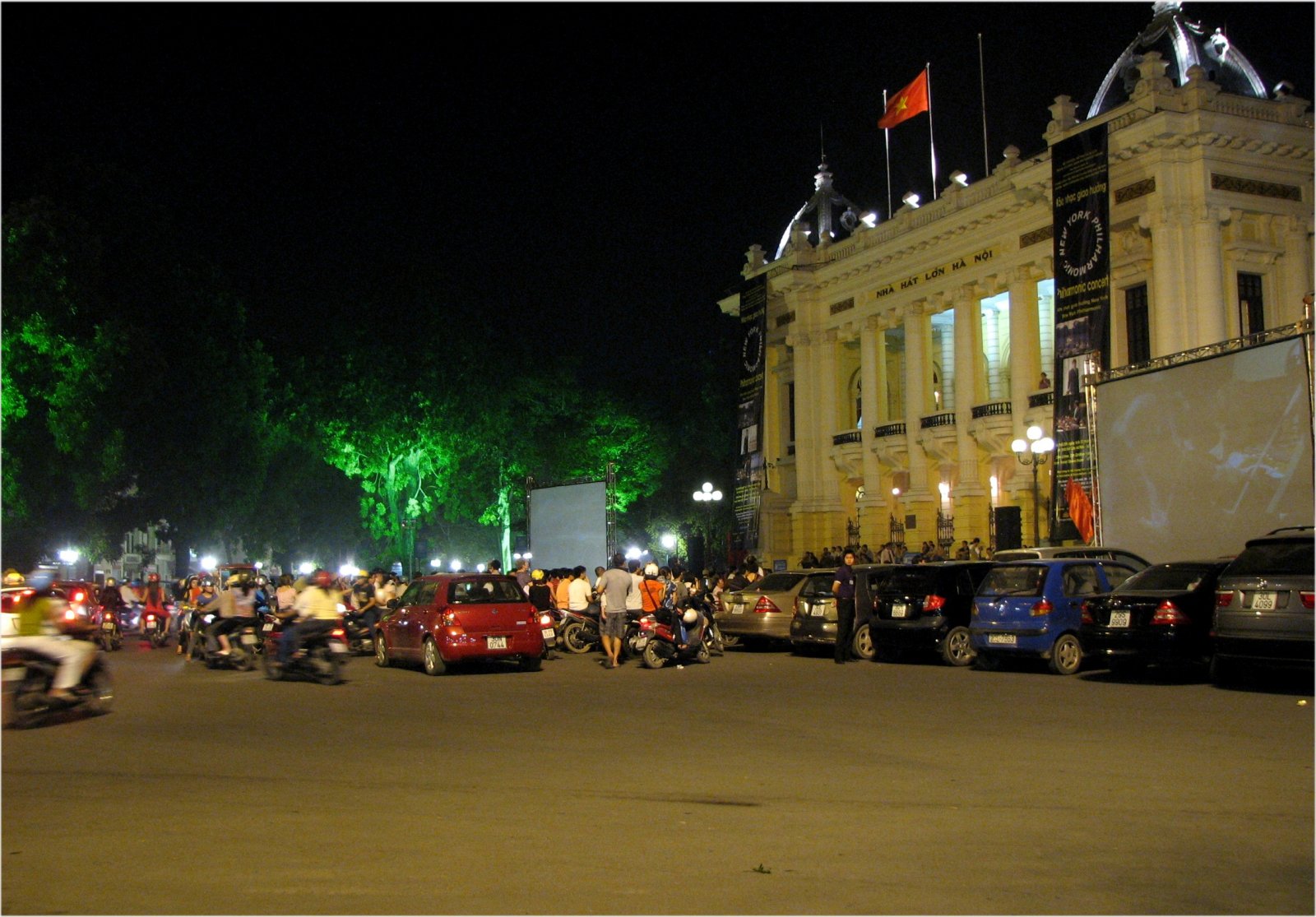
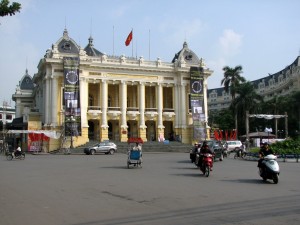
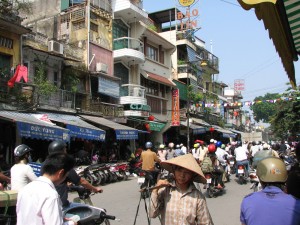
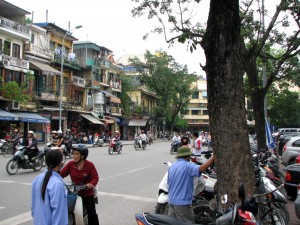
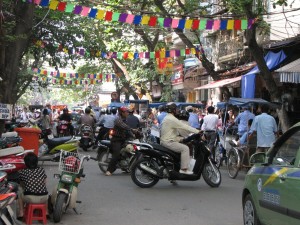
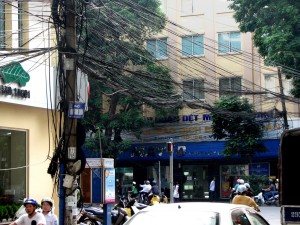
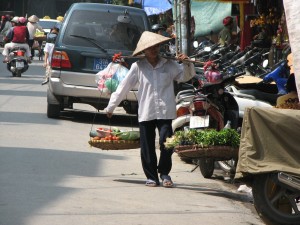
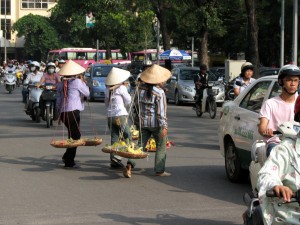
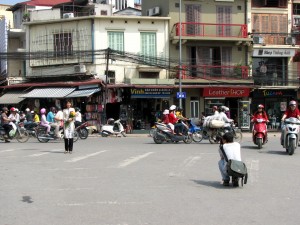
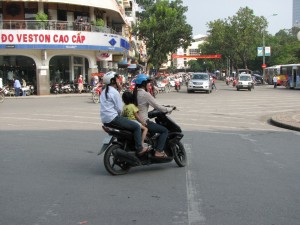
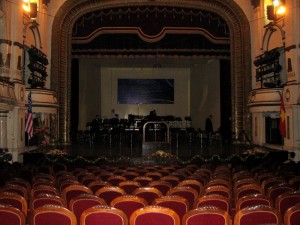
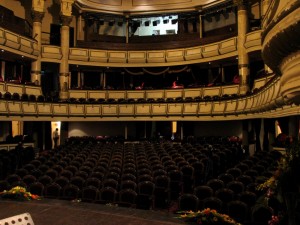
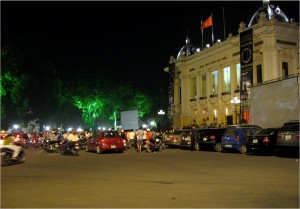
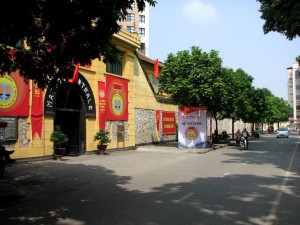
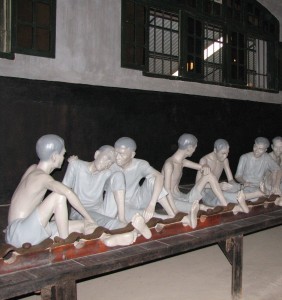
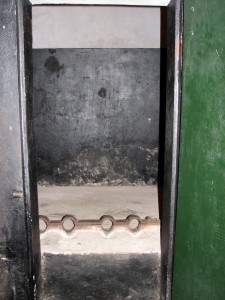
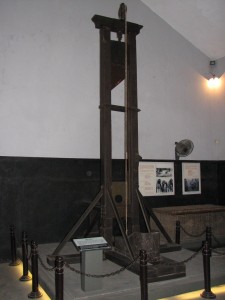
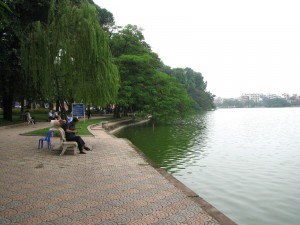
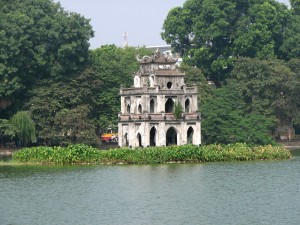
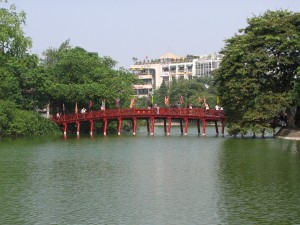
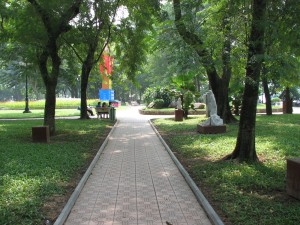
No comments yet.
Add your comment